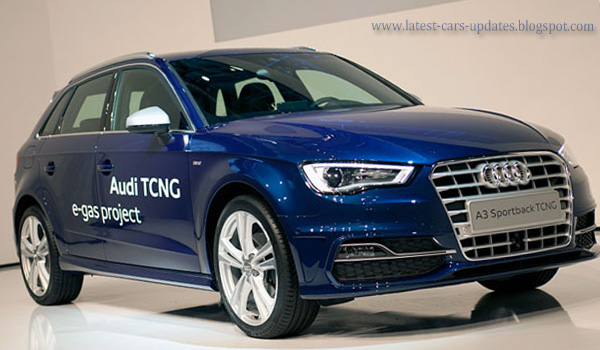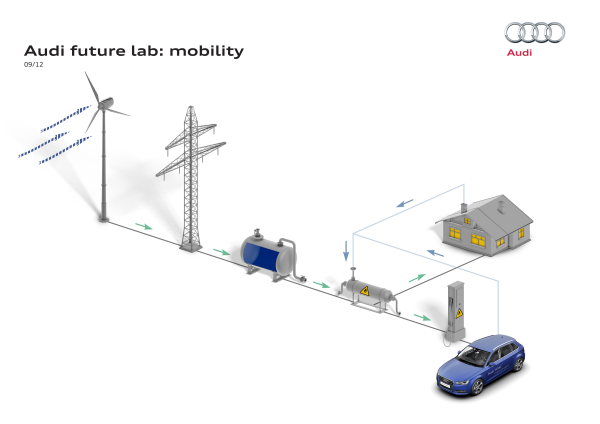
Audi’s A3 Sportback TCNG is being billed as the next big thing in sustainable mobility. The car runs on what Audi is calling “e-gas,” a substance that is more or less equivalent to natural gas and is created in a complicated chemical process explained here. Between its e-gas capacity and backup use of regular old gasoline, the A3 Sportback TCNG has a traveling range of almost 800 miles.
Perhaps most significantly, Audi’s e-gas technology can serve as a storage system for excess energy generated from renewable sources. One of the biggest problems with solar energy and wind energy is that these methods of capturing power fluctuate over the course of a day and a year. Solar power peaks when sunlight peaks (meaning both midday and summertime), and wind power peaks on windier days and windier seasons. Of course, energy use also peaks. People use more energy immediately after coming home from work, for example, when they are turning on all of their household appliances, than they do in the middle of the night, when many of these appliances are turned off.
However, the peaks of energy production and energy usage rarely overlap. When sunlight peaks in the middle of the day, most people are too busy working (albeit, often on laptops and smartphones) to turn on their dishwashers, televisions, and lights at home. This disparity in peak times wouldn’t be much of a problem, except that the electricity generated from these renewable sources is often difficult to store in the short term, and nearly impossible to store in the long term. The result is that much of the hard work that our solar panels and windmills do to generate power goes to waste as the electricity goes unused and vanishes, having been captured only briefly.
As described in their press release:
“…[Audi begins] with wind, water and carbon dioxide sourced from a biogas plant. The end products are renewably generated eco-electricity…hydrogen …and synthetic methane (Audi e-gas) which can power vehicles like the new A3 Sportback TCNG that will launch in 2013.”
Probably the compelling questions in this process are: how many watts of power are required to produce a gallon equivalent of synthetic methane? And, is this method of storing surplus electricity more or less efficient than other methods, like batteries?

The implications could be big. Audi’s facility, and similar facilities like it, could store the excess electricity produced by renewable sources, saving it from going to waste by converting it to e-gas.
(In the Audi process, the CO2 comes from a point source, at a powerplant; in theory, a system like this could also make use of CO2 captured from the air, as in Klaus Lackner’s model.)
E-gas would then enter the natural gas network, where it could be used, stored, or later converted back into electricity. This process could revolutionize renewable energy, making these green sources more efficient and thus more appealing to companies and consumers. Thus, whether or not the A3 Sportback TCNG is successful from Audi’s perspective, the e-gas technology that is being developed to power it will certainly go down as a major contribution to a greener future.
Audi’s Werlte facility will be completed and opened for operations in 2013, and the A3 Sportback TCNG will launch the same year.